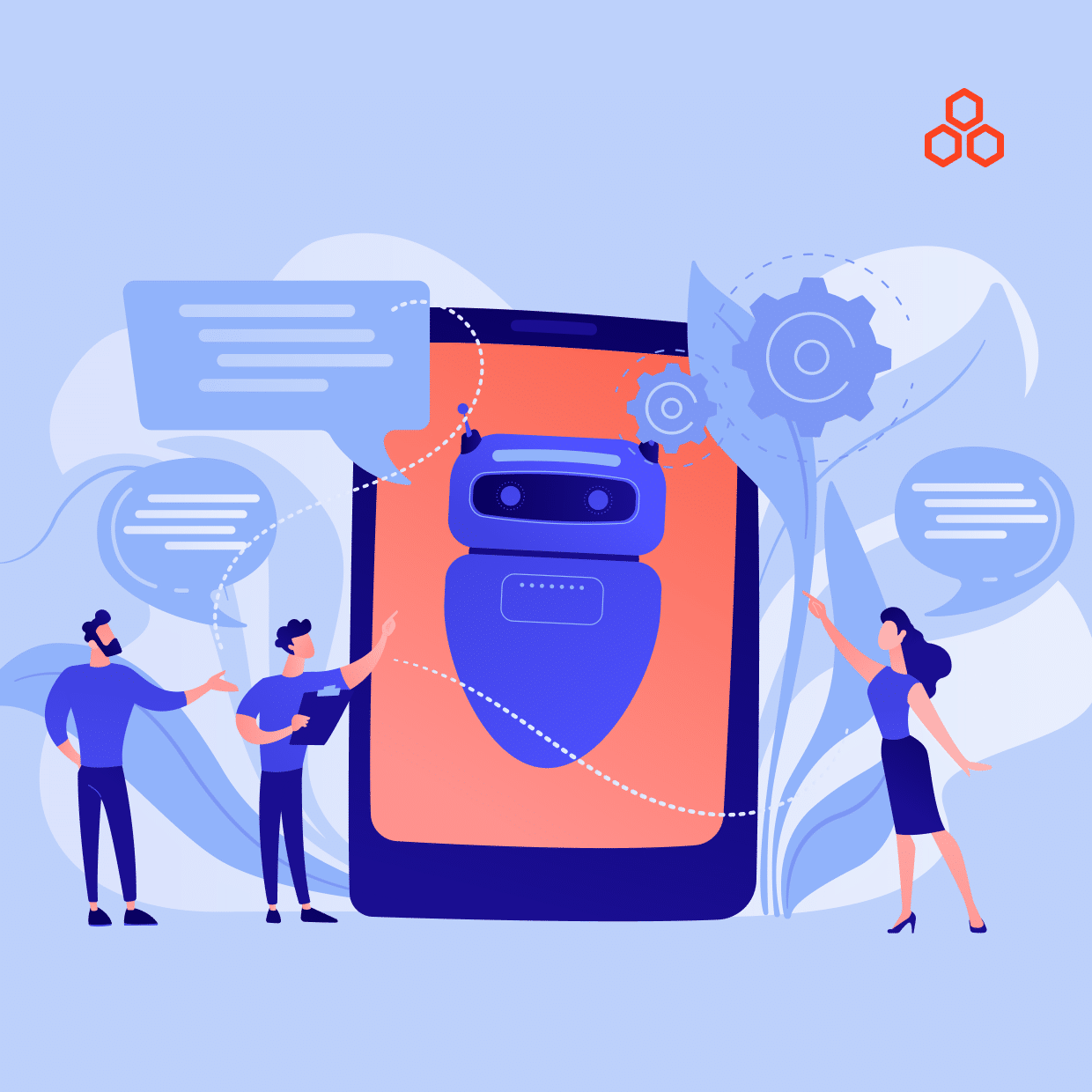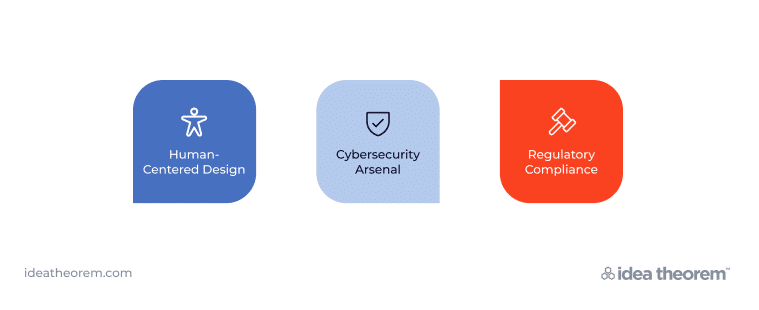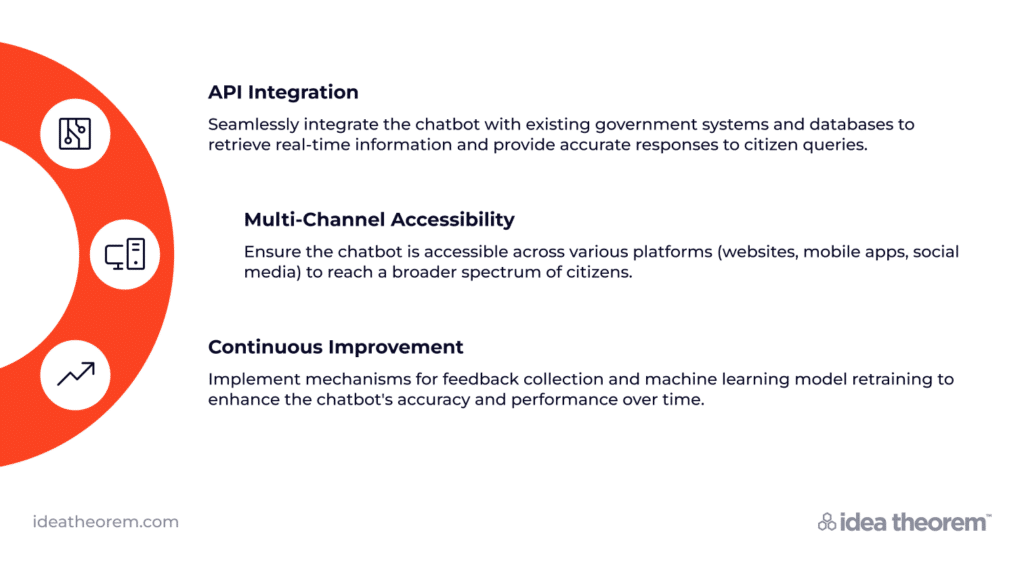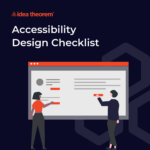UI/UX Design
AI-Powered Chatbots in Government Development and Future Trends
14 Nov 2023
8 mins read


In an age defined by technological progress, governments globally are leveraging AI-powered chatbots to innovate service delivery, streamline citizen engagement, and boost overall efficiency. The incorporation of Artificial Intelligence (AI) into government services has paved the way for pioneering solutions, reshaping the conventional landscape of citizen-government interaction. This blog aims to explore the intricate details of crafting AI-based chatbots that optimize service delivery in government.
Understanding the Role of AI-Enabled Chatbots in Government Services
Public agencies cater to a wide array of citizen requirements, ranging from disseminating information about public services to addressing queries related to policies, procedures, and beyond. This multifaceted interaction often demands an accessible, efficient, and user-friendly system – enter chatbots powered by AI.
The Development Process: Strategies and Step

- Defining Objectives and Scope: Commence by identifying specific objectives that the chatbots will tackle within government services. This entails analyzing prevalent citizen queries, service requests, and potential areas for automation.
- Data Collection and Analysis: Aggregate datasets containing FAQs, historical interactions, and pertinent information from government databases. This data serves as the backbone of the chatbots’ knowledge base.
- Leveraging Natural Language Processing (NLP) Techniques:
- Recognizing Intent: Deploy machine learning models for accurate intent classification to understand the essence behind citizen queries.
- Identifying Entities: Employ named entity recognition to pinpoint specific entities within queries, such as dates, locations, or government-related terms.
- Analyzing Sentiments: Incorporate sentiment analysis to gauge citizen emotions, enabling chatbots to respond empathetically and appropriately.
- Designing Chatbots and Architectures: Craft the chatbots’ user interfaces, ensuring accessibility and user-friendliness. Choose suitable architectures like rule-based, retrieval-based, or generative models, based on interaction complexities.
NLP Techniques in AI-Powered Government Chatbots
- Tokenization: Divide textual inputs into tokens to facilitate query processing and comprehension by chatbots.
- Word Embeddings: Implement methodologies like Word2Vec or GloVe to represent words in vector space, aiding in understanding context and
- Managing Dialogs: Utilize techniques such as state-based or rule-based systems to regulate conversation flow and maintain interaction context.
- semantics.
- Managing Dialogs: Utilize techniques such as state-based or rule-based systems to regulate conversation flow and maintain interaction context.

Strategies for Seamless Citizen Engagement

- Integrating APIs: Seamlessly merge chatbots with existing government systems and databases to provide real-time information and precise responses to citizen queries.
- Enhancing Multi-Channel Accessibility: Ensure chatbots are accessible across diverse platforms (websites, mobile apps, social media) to cater to a broader spectrum of citizens.
- Continual Enhancement: Implement mechanisms for feedback collection and machine learning model retraining, enhancing accuracy and performance over time.
Leveraging Data Insights for Enhanced Services
Advanced analytics empower governments to identify recurring issues or bottlenecks in service delivery, fostering proactive measures for process optimization and improved citizen experiences. Additionally, these insights inform policymakers about citizen needs, aiding in formulating targeted and effective policies.
Future Trends and Challenges
While AI-powered chatbots hold immense promise, their implementation faces challenges such as algorithm biases, language barriers, and integration complexities. Emerging trends like voice-enabled assistants and predictive analytics could shape the future of government-citizen interactions.
Conclusion: Shaping Citizen Government Interaction

AI-powered chatbots are revolutionizing government service delivery, enhancing accessibility, efficiency, and citizen engagement. As technology evolves, incorporating advancements in machine learning and contextual understanding will further refine these virtual assistants, making them indispensable tools in shaping the future of citizen-centric services.
In summary, successful development and implementation of AI-powered chatbots in government services necessitate a robust understanding of NLP techniques, strategic integration, and a commitment to continual improvement. As governments worldwide embrace technological innovations, these chatbots epitomize how AI optimizes and transforms citizen-centric services.
—
What’s Next
Idea Theorem is an award-winning design & development agency based in North America. Through our empathy-driven approach, we have crafted digital products that have positively impacted over 10 million users. Our mission is to shape the digital future by delivering exceptional experiences. Contact Us if you have any questions; we will gladly help you.





